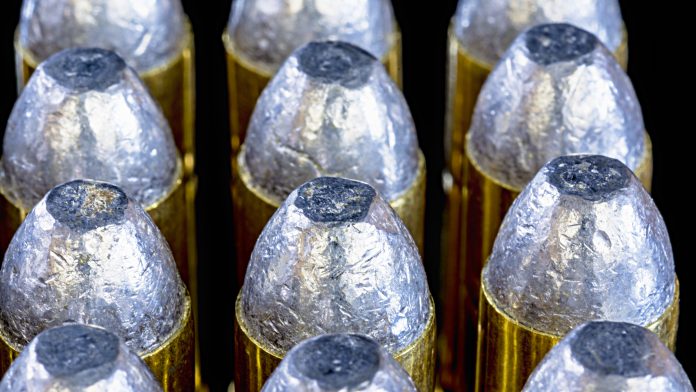Jacques Trouvilliez, Executive Secretary of AEWA, discusses the challenge of continued use of lead ammunition
While it will undoubtedly take some time to discover what lay behind the emergence and spread of the coronavirus and for our societies to recover from the effects of the disease and the economic, health and social repercussions of the shutdown, Jacques Trouvilliez says that there is one environmental challenge which could be solved at a stroke – the continued use of lead ammunition which is poisoning wildlife, habitats and people.
History has a strange habit of repeating itself. While the world is in the grips of the current COVID-19 pandemic, memories re-emerge of the avian influenza outbreak of 2006, which was a difficult time for conservationists given the unwarranted and panicked calls for wild birds to be culled because of their supposed role as a vector of the disease. Fortunately, sounder counsel prevailed, as hopefully it will in connection with today’s crisis, with simplistic solutions that are no solutions at all being rejected and a more measured, science-based responses being implemented to address problems that are complex and do not lend themselves to quick fixes.
The issue of lead poisoning, by contrast, could be solved both quickly and simply. Lead is known to be toxic. It is considered by the European Chemicals Agency (ECHA) to be a “non-threshold substance”, meaning that no amount of exposure is safe for humans. Science shows us that contact with lead can cause developmental problems in children. Over the past decades the use of lead has been banned in the fuel for our cars and in the paint for our houses. Even the Ancient Romans were aware of the dangers that lead posed to human health, yet atleast 20,000 tons of lead still find its way into the European environment each year in the form of spent ammunition.
Lead is ingested by waterbirds, which mistake spent pellets for the gravel that they need to grind the food in their gizzards. As is also the case with other poisons, the toxins in lead pass along the food chain affecting predators such as birds of prey, all too willing to scavenge on poisoned waterbird carcasses. In many cases, lead does not kill its victim outright, but still has debilitating effects, which include compromised immune systems, inability to hunt or feed, increased vulnerability to predators and reduced reproductive success, all of which can have higher population-level impacts.
It needs to be made absolutely clear that calls to phase out lead ammunition is not a veiled attack on hunting. Responsible and seasoned hunters respect nature, act as custodians of the environment and carry out their activities sustainably. Enlightened hunters in Denmark have pioneered the move to non-toxic alternative ammunition. Steel shot has slightly different ballistic properties to lead, but hunters just need a little time and practice to adjust, a small price to pay for no longer poisoning the environment and potentially by consuming contaminated game. There are opponents of change, but they peddle the same arguments that they were using 20-30 years ago, and these have all been addressed by scientific research and the practical experience of progressive hunters. Safe and affordable alternatives to lead gunshot are widely available nowadays and hunting continues in countries such as Denmark and the Netherlands which have banned the use of lead shot. In 2004 the Federation of Associations for Hunting and Conservation of the EU and Birdlife International asked ‘’for the phasing out of the use of lead shot for hunting in wetlands throughout the EU as soon as possible, and in any case by the year 2009 at the latest’’. We have already lost 11 years since then!
The United Nations’ Agreement on the Conservation of African-Eurasian Migratory Waterbirds (AEWA) included the phasing out of lead shot in wetlands as one of the legally binding obligations for its Contracting Parties. Unfortunately, despite some progress having been made, the continued poisoning by lead of millions of birds shows that this legal obligation is not yet being met. In line with the European Commission’s Zero Pollution Ambition for a toxic-free environment and a highly publicised ‘’Green Deal’’, Member States of the European Union can rectify this by banning the use of lead gunshot in or over wetlands under the framework of the EU REACH Regulation.
One of the lessons that can be learned from the coronavirus crisis is that we should reassess our relationship with nature, recognising the need for appropriate balances and ensure that when nature is used, it is used sustainably. The continued use of lead shot is resulting in unnecessary mortality and diminishes a valuable shared natural resource and the ecosystem services that waterbirds provide both as essential parts of their wider environment and as opportunities for hunting and recreational enjoyment. It is high time to take a lead and say goodbye to lead for good – for the sake of our waterbirds, our own health and that of the wider environment. Within the coming weeks, the EU member states have the opportunity to make this long-delayed decision under REACH. We hope they will make the right decision for the environment and human health.
Jacques Trouvilliez is the Executive Secretary of the Agreement on the Conservation of African-Eurasian Migratory Waterbirds (AEWA) which is administered by the United Nations Environment Programme.











